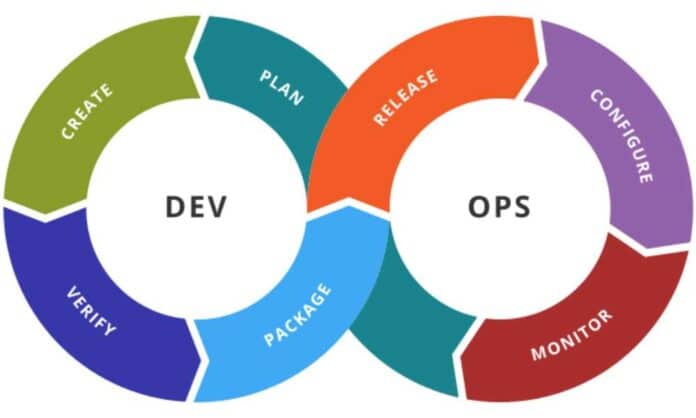Continuous reassessment and restructuring are essential for achieving pivotal and evolutionary advantages, particularly in the context of modern DevOps. The demand for intelligent and distributed solutions is continually rising through the unification of ops methodologies. The combination of DevOps and MLOps has paved the way for limitless possibilities in advanced AI and cloud solutions.
Kubernetes plays a pivotal role in efficient management, offering advanced security controls and enhanced performance. The synergy between code and computing is at the core of digital solutions, influencing each other simultaneously. While optimizations and restructuring go hand in hand, advanced solutions may experience performance degradation over time, leading to potential bottlenecks and cost implications.
Why Do Cost Spikes Occur with Kubernetes?
Although advanced and mature, Kubernetes is no exception concerning cost. Processing time and load are two prime factors affecting Kubernetes resource usage, contributing to spikes. These spikes arise due to non-performant code modules and under-utilization or over-allocation of resources.
In DevOps, issues are in abundance. Kubernetes has exceptional features to mitigate most issues, especially when distributed and complex systems are involved. Cost spikes and performance bottlenecks are common in distributed systems. These spikes are responsible for mounting the tech debt and making Kubernetes cost optimization an unavoidable consideration.
5 Kubernetes Cost Optimization Techniques
Harnessing various Kubernetes features converges to provide advanced capabilities in addressing cost impacts while enhancing performance. Achieving an optimal infrastructure with code confidence can be realized through the implementation of the following techniques:
Spot Instances
Spot instances are temporary, interruptible virtual machines offered at a significantly lower cost compared to on-demand instances. These instances are ideal for fault-tolerant, stateless workloads that can tolerate occasional disruptions.
Creating node pools with performant instance types based on the application’s resource requirements can significantly reduce CPU and memory loads.
Spot instances are unreliable and might terminate at any time based on demand. Graceful termination backup strategies to handle the unavailability can deliver highly reliable infrastructure. Leveraging spot instances in Kubernetes is a sophisticated choice that reduces expenses at scale.
Aggressive Autoscaling
Aggressive autoscaling in Kubernetes results in a responsive and dynamic architecture. This technique swiftly adjusts resources based on the load and in extreme cases by referencing patterns. This approach ensures resources align accurately with the existing workload, maximizing cost optimizations. Utilizing dynamic spot instance pools provides flexibility for implementing horizontal pod and event-driven autoscaling capabilities. This enables rapid scaling intervals in response to heavy loads and dynamic events, ensuring sub-second response guarantees and reduced latencies.
Custom Resource Definitions
Deriving custom resources that dynamically manage and optimize resources based on traffic and load can immensely boost efficiency and deplete costs. This can be attained by combining articulated autoscaling spot instances with custom scheduling policies.
By dynamically adjusting the spot instance provisioning based on cost, availability, and workload priorities, teams can elevate the performance and automate the cost optimization strategies. Through the derived policies, CRDs can deliver efficient resource handling based on cost considerations and responsive threshold-based alerts for auto-provisioning and scaling.
Comprehensive Load and Performance Testing
Performance and load testing enablement is very effective for complex and distributed workloads, especially when the agenda is to minimize the cost and maximize the performance. To guarantee autoscaling spot instances and that their management policies are meeting the requirements, testing proves to be a strategic choice.
Leverage Infrastructure as Code, network policies, and custom resource definitions to trigger provisioning templates. Monitor and analyze cloud resource load behaviors, performance bottlenecks, utilization, and parallelism stats efficiently.
Cost Analysis and Performance Monitoring with Reporting
Optimizing the infrastructural spending is a never-ending task as new models, pipelines, and modules enter the environment. Keeping up with the demand while managing the costs can be achieved through continuous monitoring and reporting.
Embed logic into Kubernetes clusters to capture and log performance metrics and cloud insights using custom scripts. Analyze application-level stats and relate them with outcomes of autoscaling spot instances and custom resource definitions. These stats aid in segregating resources based on usage and latencies. The stats offer valuable insights for implementing intelligent, self-correcting infrastructure solutions through machine learning in the current market.
Cost Efficient Deployment patterns
Cost implications can be evaded by applying sound deployment patterns. When adhered to, these patterns can optimize costs through extensive resource management with minimal risk. A use-case-specific deployment pattern is very crucial for efficient cost-reduction outcomes. The following patterns are heavily used in production-grade systems. Avoidance of unexpected resource usage through Immutable infrastructure, serverless adoption for pay-as-you-go, rolling deployments for resource sharing, etc.
Conclusion
Collective stats exhibit alarming results when compared to a single data point. When dealing with distributed cloud applications, targeting to trim resource utilization and boost application performance is crucial. Initially, the trimmings might seem minimal, but over the period they can aggregate resulting in bigger returns. Leveraging Kubernetes optimization techniques to minimize cost implications helps diminish organizational tech debt exponentially.
Leveraging spot instances through custom resource definitions that respond to incoming loads and events by autoscaling aggressively helps meet the demand. This adoption minimizes the overall cost from a computing perspective. Also, from a code perspective, robust monitoring and alerting strategies, benchmark performance, and load testing can help optimize the systems.
Check out: Is Generative AI Soon to Become a DevOps Cybersecurity Threat?

